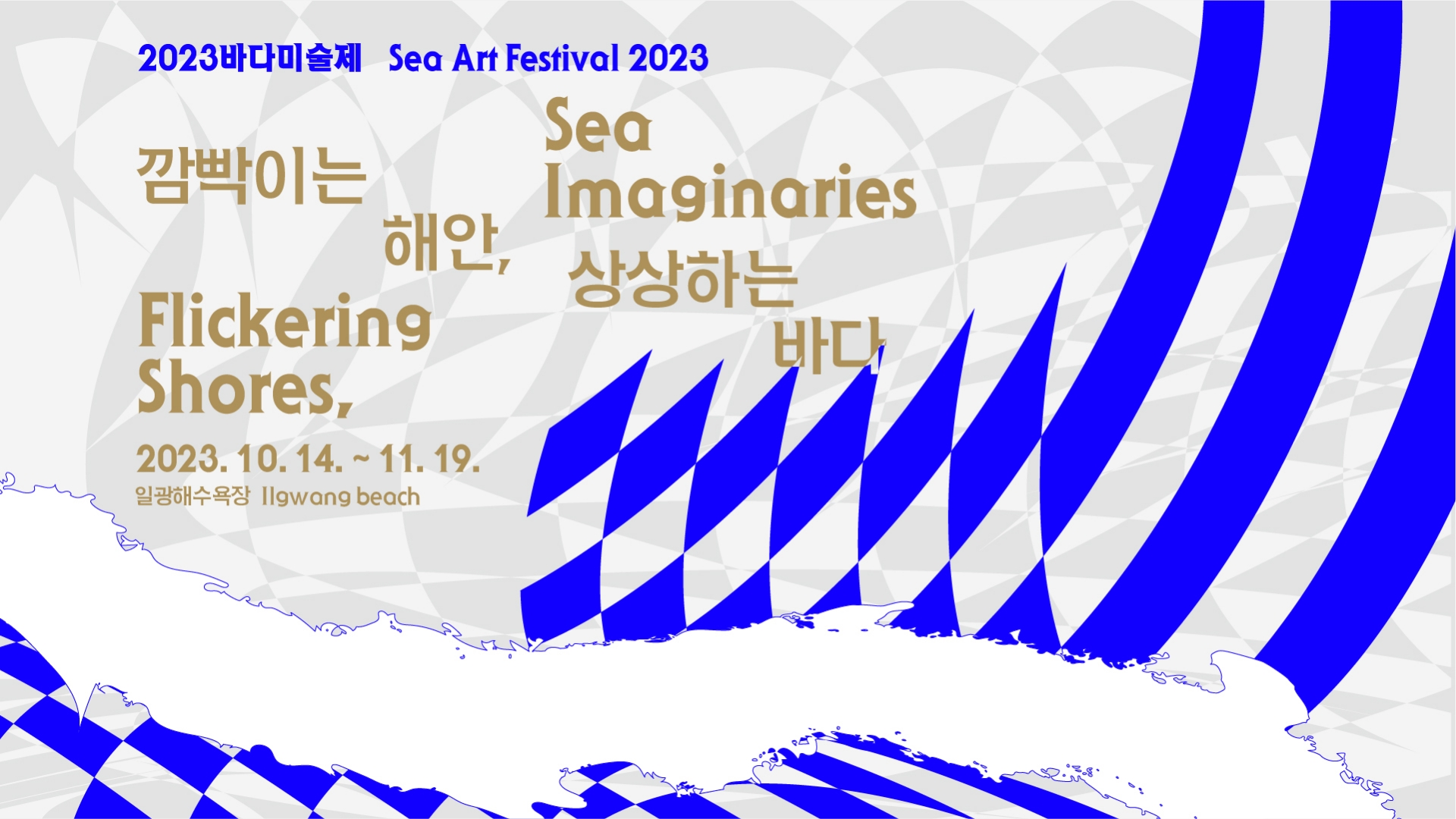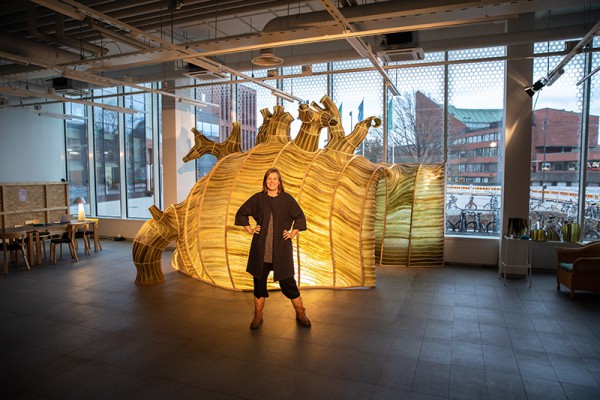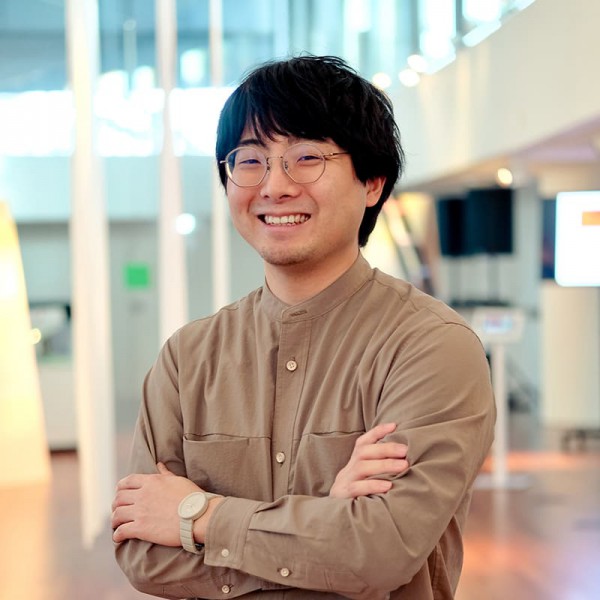


Flickering Shores, Sea Imaginaries, this year’s edition of the Sea Art Festival, is inviting us to rethink our relationship with the sea, referring to the beauty but at the same time, the fragility of our shores, and exploring alternative frameworks and visions for engaging with the ocean and marine environments.
The sea is deeply embedded in our lives and capitalist society, a vital source for our survival, but also a vast industry we exploit for food, medicines, energy, minerals, trading, travel and so on. But increased human activity, from extensive cruise tourism, shipping and overfishing to nuclear testing, pollution and deep-sea mining have been plaguing the sea, having a huge impact on marine ecosystems and habitats.

Instead of viewing the sea from the coast as a divided and abstract surface for moving around commodities, Flickering Shores, Sea Imaginaries reminds us that we are part of this body of water. This year's Sea Art Festival aims to explore new relationships with the sea and its ecologies, enabling spaces for cooperation, collective visions and synergies as a call to resistance and restoration.

Merilyn Fairskye lives in Sydney, Australia whose recent video and photographic work explores the effects of powerful events of real life on humans and the environment. Current projects that explore the relationships between technology, atomic landscapes, and community have taken her on location to the Polygon in Kazakhstan, Sellafield, Chernobyl, and other key nuclear sites. Her work has been presented at over 180 exhibitions and festivals, including at the Museum of Modern Art, New York, Tate Modern, London, the Stedelijk Museum, Amsterdam, the Museum of Contemporary Art, Sydney, and the Art Gallery of New South Wales.
VIEW MORE 
SUPERFLEX was founded in 1993 by Jakob Fenger, Bjørnstjerne Christiansen, and Rasmus Rosengren Nielsen. Conceived as an expanded collective, SUPERFLEX has consistently worked with a wide variety of collaborators, from gardeners to engineers to audience members. Engaging with alternative models for the creation of a social and economic organization, works have taken the form of energy systems, beverages, sculptures, copies, hypnosis sessions, infrastructure, paintings, plant nurseries, contracts, and public spaces. SUPERFLEX has been developing a new kind of urbanism that includes the perspectives of plants and animals, with the ultimate goal of moving society towards interspecies living. For SUPERFLEX, the best ideas might just come from fish.
VIEW MORE 
Muhannad Shono is not limited to any one particular medium or scale. His multidisciplinary practice is catalyzed and structured by the story. Shono’s work harnesses the power of narrative by creating and contesting personal, collective, and historical truths. Impacted by childhood memories, throughout his early career—and right up until today—the aim and expression of his work are rooted in exploring both the existent and non-existent boundaries which have characterized his life. His works have been presented across the world, from intimate drawings and large-scale sculptural works to robotic and technological pieces, all of which illuminate a journey he would like to take us on.
VIEW MORE 
Jang Seungwook currently works as an animation director in Reims, France. Winner of prizes at several international festivals, including IndieJúnior – International Children’s and Youth Film Festival in Portugal, In The Palace International Short Film Festival in Bulgaria, ShorTS International Film Festival in Italy, and Digicon6 ASIA Korea Regional Awards in South Korea, he is also expanding his artistic horizons by working as a children’s book author and illustrator.
VIEW MORE 


How can we enable better public engagement and open, transparent debate about nuclear power and whether it is worth the risk?
Radioactive pigeons, two pairs of twins and a massacre bring chaos to a sleepy seaside village. In this environment everything is entangled —including birds, humans and plutonium — and nothing is spared.
With an aesthetic approach that emphasizes the act of creation and construction over a passive recording and reconstruction of the world, Birds humanizes the connections between the nuclear and the everyday at a time of great environmental threat and nuclear uncertainty, reminding us that we live in thepost-Cold War nuclear age.
Today’s world is marked by increasing anxieties around nuclear energy and risks, ongoing war, extractivism and violence. And after the Fukushima disaster, the war in Ukraine and political tensions and conflicts, we know that not only is the nuclear age still here, but unless we take action, the risk of a nuclear holocaust might be even greater.
Birds is inspired by real events that took place between 1998-2010 in the area around Sellafield, the large nuclear reprocessing site in Cumbria, UK. Actors present different accounts as they were recorded in the media at the time. The imagery builds around the seaside and nuclear plant and accumulates and dissipates in a volatile environment where all forms of life are entangled. The overarching motif is the environment that the nuclear plant seeps into — land, sea and air — metamorphosing and mutating because of human actions and now, beyond human control. The birds are the constant presence, and unstoppable.
The actors’ voices are woven through a soundscape that gives a voice to the birds and to the environment. The soundscape was created by Meg Travers on a unique instrument she built, a 21st century version of the Trautonium. The original Trautonium, a 1920s German synthesizer, was used to create the non-musical soundtrack for Alfred Hitchcock’s 1963 film The Birds. Meg Travers is one of only two people in the world who compose for and play the Trautonium.
How can we enable better public engagement and open, transparent debate about nuclear power and whether it is worth the risk?
Radioactive pigeons, two pairs of twins and a massacre bring chaos to a sleepy seaside village. In this environment everything is entangled —including birds, humans and plutonium — and nothing is spared.
With an aesthetic approach that emphasises the act of creation and construction over a passive recording and reconstruction of the world, BIRDS humanises the connections between the nuclear and the everyday at a time of great environmental threat and nuclear uncertainty, reminding us that we live in the post-Cold War nuclear age.
Today’s world is marked by increasing anxieties around nuclear energy and risks, ongoing war, extractivism and violence. And after the Fukushima disaster, the war in Ukraine and political tensions and conflicts, we know that not only is the nuclear age still here, but unless we take action, the risk of a nuclear holocaust might be even greater.
Birds is inspired by real events that took place between 1998-2010 in the area around Sellafield, the large nuclear reprocessing site in Cumbria, UK. Actors present different accounts as they were recorded in the media at the time. The imagery builds around the seaside and nuclear plant and accumulates and dissipates in a volatile environment where all forms of life are entangled. The over-arching motif is the environment that the nuclear plant seeps into — land, sea and air — metamorphosing and mutating because of human actions and now, beyond human control. The birds are the constant presence, and unstoppable.
The actors’ voices are woven through a soundscape that gives a voice to the birds and to the environment. The soundscape was created by Meg Travers on a unique instrument she built, a 21st century version of the Trautonium. The original Trautonium, a 1920s German synthesizer, was used to create the non-musical soundtrack for Alfred Hitchcock’s 1963 film The Birds. Meg Travers is one of only two people in the world who compose for and play the Trautonium.
VIEW MORE 
The sea has many faces. Sometimes, it comes to us with a calm smile, sometimes with a storm as if it were angry. Today, people have led an affluent life with the diversity that the sea gives humans. At the same time, people wonder whether they can pass on the earth's ocean to future generations in its entirety.
This installation expresses the symbiotic relationship between people, marine environments and the sea, which is still a base of infinite life that can be restored. In the ocean, the deep sea has a deep interior. Attention moves quietly and slowly, not being swayed by the changes and waves of the busy world. Deep Sea Meditation the feeling of walking along the path of the deep sea, a realm where you can enjoy quiet and deep contemplation away from the hustle and bustle of urban modern life. It also intends a time to look back on the relationship with the sea in the past, and consider a future where our connection with the deep sea hopefully wouldn't be one of exploitation.
VIEW MORE 
Would you adapt your body to “serve” marine ecosystems and keep aquatic organisms healthy?
How to Become Wholesome investigates how bodily waste, in the broadest sense (tears, sweat, and urine), may contribute towards the wellbeing of aquatic organisms.
Extending from Kasia’s renowned installation How to Make an Ocean, where the artist collected and analyzed the chemical composition of human tears in order to feed tiny marine ecosystems, this work poses a series of questions such as: How to care for one's own body so that it becomes the most nutritious for a marine ecosystem? What tools are needed to harvest those nutrients from the human body? How do we test harvested substances for their suitability? What are the aesthetics of this process and of developing connections between the human body and the ocean?
The ongoing research behind this project is presented in a series of records and tools. Diet diaries and records of the chemical composition of Molga’s bodily secretion (Records of Transforming into Resource); a series of sketches of tools for helping to harvest nourishment from bodily waste (Tools for Harvesting Nourishment); and invented for purpose lab instruments.
Most importantly, at the heart of the current edition of this installation, are 3 to 4 interconnected water tanks. In these tanks, water made out of various bodily sources mixes with seawater, influencing the growth and nourishing the development of specially selected aquatic plants.
How to Become Wholesome draws a parallel between the wellbeing and survival of the human body with that of non-human species and reminds us that we are very much part of nature and the ocean, not a separate entity.
VIEW MORE 
The ocean is the origin of uncertainty and the beginning of navigation, an opening of the world where dreams of submission and domination meet. According to French philosopher, theorist and writer Michel Serres, it is the origin of noise.
Part cosmic weather report, part geo-strategic briefing, part romantic novella, Ocean Briefings is a series of daily transmissions taking place over the course of the Sea Art Festival. Telling tales of logistical breakdown, geopolitical scrambling, meteorological anxiety and erotic intrigue, it takes inspiration from the instability of a world in the making. For the duration of the festival, it functions as a “subtitle” to Ilgwang Beach, framing the sea in search for signals in an ocean of noise.
VIEW MORE 
Have you ever looked closely at a grain of sand? Imagined it as a small part of the world, with its very own story to tell?
The journey of a grain of sand has been guided by water, wind, and ice over time. Just like people, each grain has its own character and tells a unique story of the land and history. It is also one of the most important materials in our lives. Without it, we would have no glass, no computer chips, and no buildings.
To See a World in a Grain of Sand is a project that maps the Earth through small sand samples contributed by people worldwide, revealing hidden narratives embedded in glass fused from 'wild' sands. From a hot and dry desert to a cold and snowy mountain; a skyscraper in a bustling city to an archaeological ruin; an invisible political border to a vast and open landscape; an excavated gold mine to the bottom of an ancient seabed; or a place of civil unrest to a serene holiday island. When these geographical diversities become visible, it becomes clear that sand carries not only ecological significance but powerful social and political histories.
Specially curated for the Sea Art Festival, Atelier NL delves into South Korea's history. In the intricate tapestry of our planet's story, sand stands as a silent witness to the passage of time, shaped over billions of years. Yet, this seemingly abundant resource faces an urgent global crisis - a scarcity driven by insatiable demand.
Every year, we remove billions of tons of sand from beaches, rivers, oceans, and quarries across the planet, locking it away in infrastructure and technology. This makes sand one of the most quickly disappearing natural resources in the world, so much that there is now a global sand scarcity.
Amidst these global challenges, South Korea stands at a crossroads. As a rapidly growing nation, it must strike a delicate balance between ambitious development plans and safeguarding the environment. Busan's skyline of towering skyscrapers showcases the magnitude of sand's role in construction. It serves as a poignant reminder that sustainable sand management is crucial to support the city's growth while preserving the natural beauty that surrounds it. This installation invites you to see the world anew, where the humble grain of sand carries stories of our past, present, and future.
The collected sands, mainly gathered by Bora Hong, a multidisciplinary designer from Seoul now residing in Chiang Mai, are visualized on the map of South Korea. During her 10-day road trip, she collected sands from diverse beaches along the coastline. Exploring rivers and little streams led her to unexpectedly beautiful and tranquil locations. Bora's involvement with "aworldofsand.com" allowed her to uncover sands with profound stories and memories reflecting the country's rich cultural heritage and natural beauty.
Alongside Bora's captivating journey, Atelier NL categorized each story and place into six themes: history, migration, meaning, ecology, delay, and scarcity, providing a unique perspective on the sands' significance and the memories they evoke.
VIEW MORE 

포레스트 커리큘럼은 남아시아와 동남아시아를 잇는 삼림지대 조미아의 자연문화를 통한 인류세 비평을 주로 연구합니다. 작품 유랑하는 베스티아리는 이 연구의 일환으로, 비인간적 존재들이 근대 국민국가에 내재된 계급적이고 세습적인 폭력과 그에 따른 잔재들에 어떻게 대항해왔는지를 보여주는 작품입니다. 좌중을 압도하는 듯한 거대한 깃발들은 위태롭고도 불안하게 스스로를 지탱하고 있는 듯 보입니다. 깃발에는 벤조인이나 아편부터 동아시아 신화에 등장하는 동물들까지 비인간 존재들을 상징하는 대상들이 그려져 있습니다. 각 깃발들은 비인간적 존재들의 대표자로서 모두가 한데 결합되어 아상블라주 그 자체를 표상합니다. 또한 깃발들과 함께 설치된 사운드 작품은 방콕과 파주에서 채집된 고음역대의 풀벌레 소리, 인도네시아의 경주용 비둘기들의 소리, 지방정부 선거를 앞두고 재정 부패를 유지하기 위한 수단으로 쓰이는 불필요한 공사에서 발생하는 소음, 그리고 위의 소리들을 찾아가는데 사용된 질문들과 조건들을 읽어 내려가는 내레이션으로 이루어져 있습니다.




